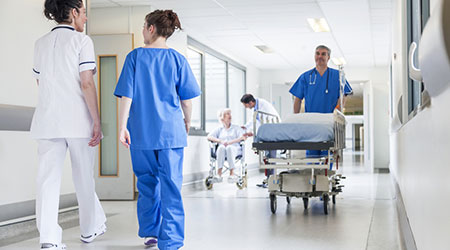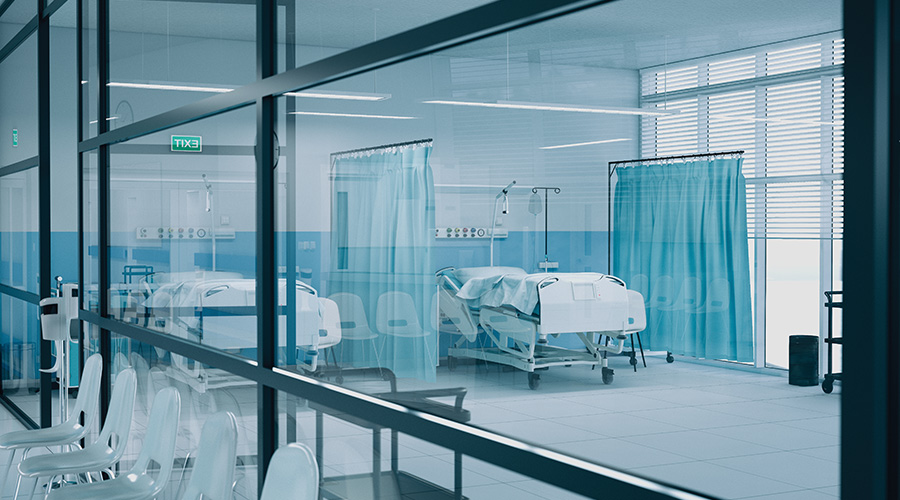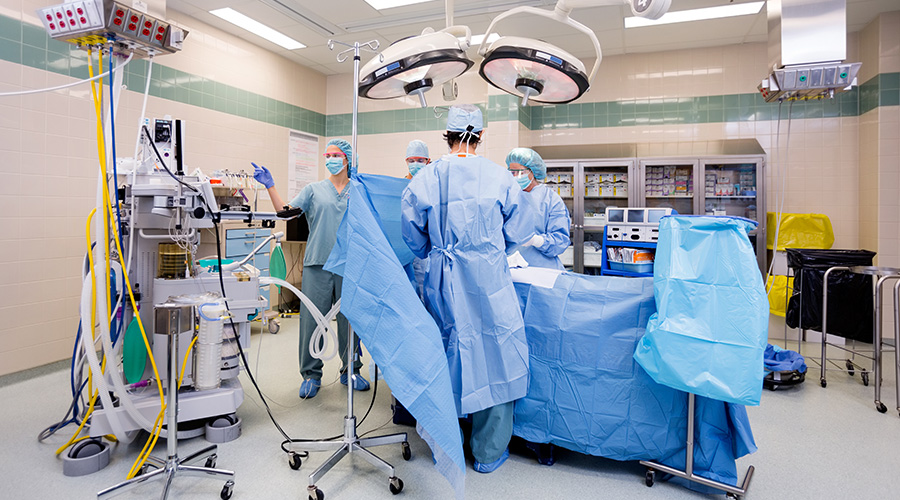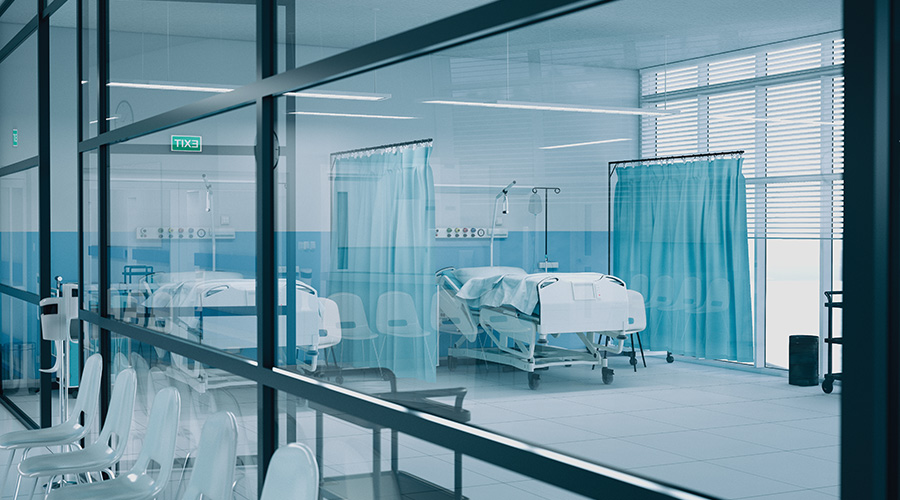Providing an exceptional patient experience is a top priority for every healthcare system. But despite a significant push towards more patient-centric facilities in recent years, the pandemic has presented facility managers a slew of new challenges. One way healthcare leaders can help their organizations pull through in the era of COVID-19 is with investments in environmental monitoring.
The benefits of temperature and environmental monitoring are twofold. In the short term, automated monitoring bolsters the protection of costly assets — saving healthcare systems money at a time when revenues are down across the industry — and allows busy staff members to focus more time on other tasks. This allows patients to receive better quality care with a minimized risk of contracting a healthcare associated infection (HAI).
In the long-term, a positive patient experience could lead to an improved reputation within the community and, in time, increased revenue for the healthcare system. Implementing an environmental monitoring system would help healthcare facilities thrive during COVID-19 and long after.
Automation for operations
Temperature and environmental monitoring are imperative in the fight against COVID-19, but manually monitoring can leave too much to chance. Picture a busy staff member quickly recording a cooler temperature reading while being paged to assist a coworker. They could easily misread the temperature or leave the cooler open for too long, possibly affecting future temperature readings and whatever assets are inside. Automation can provide and record real-time, accurate readings so it’s one less thing staff have to worry about.
Automation also supports equipment maintenance, saving facilities even more money in the long run. Sometimes equipment fails and staff members don’t realize it until it’s too late, leading to inefficient workflows while they wait for the equipment to be fixed or replaced. With automation, healthcare workers can get alerted in real-time of any malfunctions.
Automated monitoring systems are a worthy investment; they help facilities with overhead costs by streamlining aspects of facility operations. Let’s examine areas of facility operations where automated environmental monitoring can be particularly helpful in the context of COVID-19 — starting with what everyone is waiting on: vaccines.
Gearing up for vaccines
Getting a vaccine through clinical trials and past regulatory approvals is just one small step in the process. After that comes the vaccine supply chain, which one expert recently called “mind-bogglingly” complex.
There are currently several COVID-19 vaccine suppliers in Phase 3 clinical trials: Pfizer, Moderna and AstraZeneca. All three show promise, but there is one thing that could make or break their distribution and storage, and that’s temperature. To complicate matters, the vaccines must be stored at different temperatures.
The Moderna vaccine must be stored at -4 degrees Fahrenheit, where Pfizer’s vaccine needs to be stored at -94 degrees. The Moderna vaccine can be stored “for up to two weeks at normal refrigerator temperatures,” but when it reaches room temperature it must be used within six hours. The CDC says vaccines will be in limited supply once they’re made available, so healthcare systems must do everything they possibly can to avoid unnecessary loss.
The truth is, no one knows what exactly the future holds in terms of a vaccine, but in any case, it appears temperature monitoring will be an important factor. And while the world waits for a vaccine, healthcare professionals are reliant on coronavirus tests and treatments that also require specific temperature conditions.
Conserving tests, medications and plasma
In the absence of a vaccine, the best way to make people feel safe during the pandemic is with fast, accessible, and accurate testing. “Drive-thru” testing in particular has gained popularity due to its efficiency and ability to support social distancing. Although efficient, the process does not come without its own challenges.
Most COVID-19 tests need to be stored at 2-8 degrees Celsius to provide an accurate reading. Many testing sites rely on portable refrigeration coolers that can be riddled with human error, but adding a “smart” component to them could help eliminate a lot of potential risk. Flashing LEDs and external displays connected to an internal sensor can create an automated system that operates via mobile devices and independent of a network connection. Audible sensors can notify staff if a cooler has been left open and digital displays eliminate the need to open the cooler to an internal thermometer.
For patients with confirmed and severe cases of the disease, antiviral medications like Remdesivir could greatly reduce the discomfort caused by COVID-19 symptoms. However, with patients requiring up to five cycles of antiviral medication — sometimes at approximately $3,000 per 5 day course — unnecessary loss could be costly for the facility and have a negative impact on patient recovery.
Like antiviral medications, convalescent plasma is also being used to treat infected COVID patients and must be stored and thawed at specific temperatures to remain effective. And like experts expect of vaccines, plasma is already in short supply, making its conservation imperative.
Given the importance of accurate testing as well as the cost and limited supply of treatments, precise and reliable temperature monitoring has never been more important. Automated systems can be used to monitor the temperature of vaccines and treatments with minimal oversight and less risk of unnecessary loss.
Preventing the spread in facilities
So far, we have focused on temperature monitoring, but monitoring environmental conditions is also important for fighting COVID-19 in healthcare facilities.
In an ideal scenario, every COVID-infected patient would be isolated in a negative air pressure room to avoid respiratory droplets from entering hospital air supply. The same technologies that deliver automated temperature monitoring can support differential air pressure (DAP) sensors to monitor air flow and alert staff when conditions change. Beyond isolation rooms, recent research indicates that maintaining 40 percent to 60 percent relative humidity (RH) may reduce contagions and help those who are infected.
Healthcare facilities are responsible for addressing and minimizing HAIs for the sake of saving money and, more importantly, ensuring patient safety. Mitigating the spread of infection means reducing HAIs, which also helps increase bed turnover and safely offer revenue-driving procedures like elective surgeries.
For the foreseeable future, healthcare leaders face an incredible challenge: offering a positive patient experience amidst a global pandemic. Automated environmental monitoring and temperature can play an important role as we fight the virus today and develop our new normal in a post-COVID world.
Lorn Clancey is the senior director of temperature and environmental monitoring solutions at CenTrak.

 Building Hospital Resilience in an Era of Extreme Weather
Building Hospital Resilience in an Era of Extreme Weather Ennoble Care Falls Victim to Data Breach
Ennoble Care Falls Victim to Data Breach USDA Invests $73.8M to Aid in Livingston Hospital Expansion
USDA Invests $73.8M to Aid in Livingston Hospital Expansion Why A Skilled Cleaning Staff Matters in Operating Rooms
Why A Skilled Cleaning Staff Matters in Operating Rooms General Leonard Wood Community Hospital Opening Date Set
General Leonard Wood Community Hospital Opening Date Set